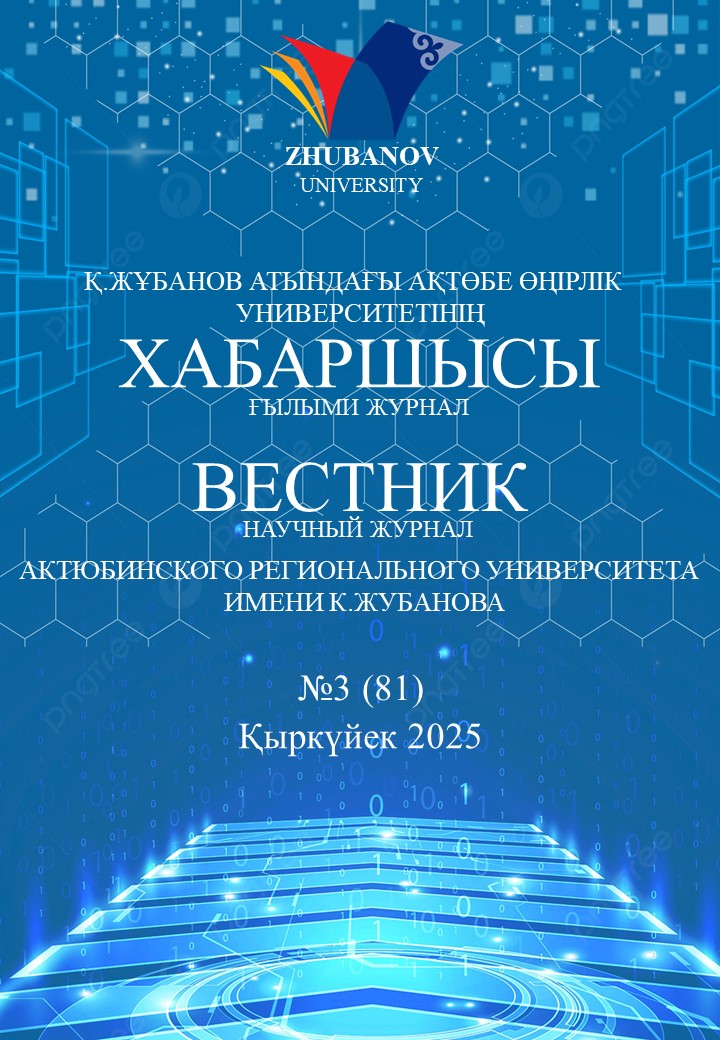The article deals with the frame structure forming the basis of concepts as illustrated by new Kazakh terms appeared due to the need for nominating certain phenomena in the scientific field, which is considered as a logical result of the development of Kazakh terminological systems. The article’s authors analyze the relation between terminology and cognitive linguistics based on new terms frequently used both in the scientific and common languages. Terms created on the basis of current nominative units are considered as a part of the frame structure that includes all possible information about an object. The article investigates the mental bond between a term as a linguistic fact and its expression reflected in the speaker’s mind as a concept in the cognitive structure. The article is aimed to show the relation between a concept as a mental unit and a term as its linguistic representation based on conceptual analysis resulting in a certain frame model formation. The practical significance of the article is due to the possibility of applying the obtained results in the development of courses and teaching aids in the field of cognitive terminology for students, master’s students and PhD students of philological faculties. The findings of the study contribute to the creation of new terms and translation process of existing foreign language terms into the Kazakh language.
ABDULLINA N.U.
PhD, head of the department of russian philology and intercultural communication, Aktobe Regional University named after K.Zhubanov, Aktobe, Kazakhstan
E-mail: nazgulua@mail.ru, https://orcid.org/0000-0003-2279-9426
FABER BENITEZ P.
PhD, Professor, University of Granada, Granada, Spain
E-mail: pamelafaber@gmail.com, https://orcid.org/0000-0003-0581-0005
- Kachru 1994: Kachru, B.B. The Speaking Tree: A Medium of Plural Canons. – In: J.A.Alatis (ed.) Educational Linguistics, Crosscultural Communication, and Global Interdependence (Georgetown Round Table on Language and Linguistics, 1994). Washington DS: Georgetown University Press, 1994, p 54.
- Aitbaiyly O. Qazaq sozy: qazaq terminologiasynyn negizdery. – Аlmaty: Rauan, 1997. – 240 b.
- Fillmore С.J, Atkins B.T. Toward a frame-based lexicon: the semantics of RISK and neighbors // In book: Frames, Fields, and Contrasts: New Essays in Semantic and Lexical Organisation. – NY., 1992. – P. 75-102.
- Demyankov, V.Z. Freimovaya semantika // Kratkyi slovar kognitivnykh terminov/ Kubriykova Е.S., Demyankov V.Z., Pankrac U.G., Luzina L.G. Pod оbsh.red. Е.S.Кubriykovоi. М.: Filologichesky facultet MGU im.М.V.Lomonosova, 1996. s.189-191.
- Boldyrev, N.N. Коgnitivnaya lingvistika. Moskva, Direkr-Мedia – 2016, 251 s.
- Mynsky M. Fraiymy dlya predstavleniya znanyi. М.: Energiya, 1979. – 152s
- Faber P. Terminographic definition and concept representation // In book: Training the Language Services Provider for the New Millenium. – Porto: University of Poprto, 2002. – P. 345-354.
- Golovin B.N. Tipy terminosistem I osnovaniya ih razlicheniya // Тermin I slovo: mezhvuz. sb. – Gorkyi, 1981. – s. 3-10.
- Leichik, V.M. Kognitivnoe terminovedenie – piyatyi etap razvitiya terminovedeniya kak vedushei nauchnoi discipliny rubezha XX – XXI vekov // Коgnitivnaya lingvistika: novye problemy poznaniya. М.; Ryazan, 2007. s. 121 – 132.
- Piotrovsky, R.G. Sinergetika teksta: ucheb. pos. – Мinsk: МGLU, 2005. – 204 s. 2-ye izdanie, ispravlennoe i dopolnennoe. — М.: Yaziky russkoi kultury; Izdatelskaya firma «Vostochnaya literatura» RАN, 1995.
- Budagov R.A. Ocherki po eazikoznaniyu (Specifika termina) / Istoriya otechestvennogo terminovedeniya: V 3-h tomah, Т.2. Napravleniya I metody terminologicheskih issledovanii: ocherk I chrestomatiya. М.: Моskovskyi licey, 1995. Kniga 1. – 334 s.
- Alekseeva, L.M. Problemy termina I terminoobrazovaniya: ucheb. pos. – Perm: Izd-vо Permskogо univer., 1998. – 120 s.
- ISO. International Organization for Standardization. 1087 – 2019. Terminology work and Terminology science. https://www.iso.org/ru/standard/62330.html
- Qazaqstan. Ūlttyq ensiklopedia. A.Nysanbaevtyñ red. T.1-5. Almaty.: Qazaq ensiklopediasy, 1998. – 720 b.
- Orysşa qazaqşa tüsındırme sözdık / E.Aryn red. Pavlodar.: S.Toraiğyrov at. PMU., «EKO», 2006. – 569 b.
- Lakoff G., Johnson M. Philosophy in the Flesh: the Embodied Mind and Its Challenge to Western Thought. – N.Y.: Perseus Books, 1999. – 624 p.


